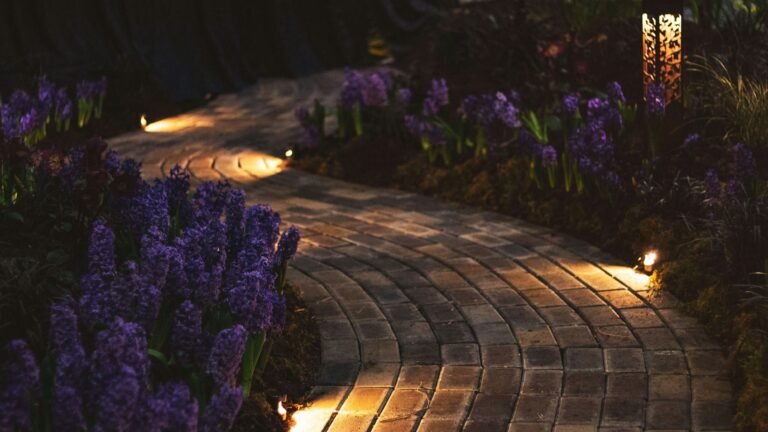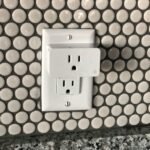Discover the best outdoor heat lamps for patio gardens and learn how to extend your outdoor enjoyment all year round with these efficient heating solutions.
Imagine savoring a cup of coffee on your patio during a crisp autumn morning or hosting a cozy evening gathering in your garden, even when temperatures drop. Outdoor heat lamps for patio gardens enable you to enjoy these moments by providing warmth and comfort, transforming your outdoor space into a year-round retreat.
As the seasons change, maintaining a comfortable outdoor environment becomes essential for those who cherish their patio gardens. Outdoor heat lamps not only extend the usability of your garden but also add a touch of elegance and ambiance. They come in various styles and technologies, catering to diverse needs and preferences.
This article will guide you through everything you need to know about outdoor heat lamps for patio gardens. We will explore their importance, key features, different types, and offer tips on selection, usage, and maintenance. Whether you’re a seasoned gardener or new to outdoor living, you’ll find valuable insights to enhance your patio experience.
Bring your ideas to life with pro‑grade visuals—4K and 360°, watermark‑free. Start free where available and design with confidence.
Trusted by professionals for faster approvals, clearer communication, and fewer meetings.
Free trial availability depends on region/store. Final terms and pricing appear at checkout. Disclosure: This article contains affiliate links. If you buy through our links, we may earn a small commission at no extra cost to you.
Table of Contents
Understanding Outdoor Heat Lamps for Patio Gardens
Outdoor heat lamps are designed to provide warmth to outdoor spaces, making them perfect for patio gardens. They allow you to enjoy your garden throughout the year, regardless of the weather.
- Heat lamps come in various fuel types, such as electric, propane, and natural gas, each with distinct advantages.
- They are available in different designs, including freestanding, wall-mounted, and tabletop models, to suit various space requirements.
- Heat distribution varies between models, with some offering focused warmth while others provide broader coverage.
Key Features and Capabilities of Patio Heat Lamps
When choosing an outdoor heat lamp, understanding the key features and capabilities can help you make an informed decision that suits your needs.
- Heat Output: Measured in BTUs or watts, this determines the warmth provided. Higher output means more heat.
- Weather Resistance: Look for lamps with weatherproof materials to withstand outdoor conditions.
- Safety Features: Consider models with automatic shut-off and tip-over protection for added safety.
Comparing Different Types of Outdoor Heat Lamps
Outdoor heat lamps come in various types, each offering unique benefits and considerations. Here’s a comparison to help you choose the right one for your patio garden.
| Feature/Type | Benefits | Best For | Considerations |
|---|---|---|---|
| Electric Heat Lamps | Easy to use, no emissions | Small to medium patios | Requires electrical outlet |
| Propane Heat Lamps | Portable, high heat output | Large outdoor spaces | Needs fuel refills |
| Infrared Heat Lamps | Efficient, instant heat | Eco-conscious users | Higher initial cost |
Choosing the Right Heat Lamp for Your Patio Garden
Selecting the right heat lamp involves considering several factors to match your specific needs and patio setup.
- Assess Your Space: Measure your patio area to determine the size and number of heaters needed.
- Evaluate Fuel Options: Decide between electric, propane, or natural gas based on availability and preference.
- Check Local Regulations: Ensure compliance with any local codes or restrictions on outdoor heaters.
Using and Implementing Outdoor Heat Lamps
Proper usage and installation of outdoor heat lamps are crucial for safety and efficiency. Follow these steps for optimal results.
- Install Safely: Follow manufacturer instructions for setup and ensure stable, secure placement.
- Maintain Clearance: Keep flammable objects away from the heat lamp to prevent accidents.
- Regular Monitoring: Periodically check for any signs of wear or damage to maintain performance.
Caring for and Maintaining Your Patio Heat Lamp
Regular maintenance prolongs the life of your outdoor heat lamp and ensures consistent performance.
- Clean Regularly: Remove dust and debris from the lamp and ensure vents are unobstructed.
- Check Connections: Inspect electrical and fuel connections for any signs of wear or damage.
- Store Properly: During off-seasons, store the lamp in a dry, sheltered area to protect it from the elements.
Expert Tips and Recommendations
- Optimize Placement: Position heat lamps strategically to maximize warmth distribution across your patio.
- Invest in Quality: Choose reputable brands with reliable customer reviews to ensure durability and efficiency.
- Consider Covers: Use protective covers when not in use to extend the life of your heat lamps.
- Monitor Energy Use: Use timers or smart plugs to manage energy consumption and reduce costs.
Common Questions About Outdoor Heat Lamps for Patio Gardens: Stay Warm and Enjoy Your Garden All Year
Find answers to frequently asked questions about outdoor heat lamps for patio gardens.
- Q: Are outdoor heat lamps safe to use on covered patios?
A: Yes, but ensure proper ventilation and follow manufacturer guidelines to prevent overheating. - Q: How much area can a typical patio heater cover?
A: Most patio heaters can cover approximately 100-200 square feet, depending on the model and heat output. - Q: Can I leave my patio heater outside year-round?
A: While some heaters are weather-resistant, it’s advisable to store them during extreme weather conditions to prolong their lifespan. - Q: What is the average lifespan of an outdoor heat lamp?
A: With proper maintenance, outdoor heat lamps can last between 5-10 years. - Q: Do patio heaters require a lot of maintenance?
A: Routine cleaning and inspections are generally sufficient to keep patio heaters in good working condition.
Conclusion
- Choose the right type for your space: electric for well-ventilated covered areas (use GFCI outlets), portable propane for flexible placement in fully open spaces, or hard‑line gas for permanent setups. Check local codes and permit needs before installation.
- Size for comfort and conditions: match wattage/BTU to your seating area and climate, and account for wind. As a guide, small nooks often suit a 1,500 W electric unit; larger open patios may need 30,000–50,000 BTU or multiple zones.
- Place and use safely: maintain manufacturer clearances from walls, ceilings, fabrics, and plants; anchor freestanding bases; route cords/hoses to prevent trips; never use gas heaters in enclosed areas; use outdoor-rated outlets/cords and GFCI protection; consider a CO alarm for semi-enclosed spaces.
- Maximize efficiency: block wind with screens, cluster seating within the heat footprint, pre-warm for 10–15 minutes then lower the setting, and use timers or remotes to heat only when and where you sit.
- Protect your plants: keep heat a safe distance from foliage, add heat shields near delicate leaves, and monitor soil moisture—containers can dry faster under radiant heat.
- Maintain and store: clean reflectors and grilles, inspect hoses and connections, replace worn parts, cover units when not in use, and disconnect fuel before storage.
Plan your layout in Planner 5D
This article contains affiliate links. If you make a purchase, we may earn a commission at no extra cost to you.
Last updated on September 11, 2025







